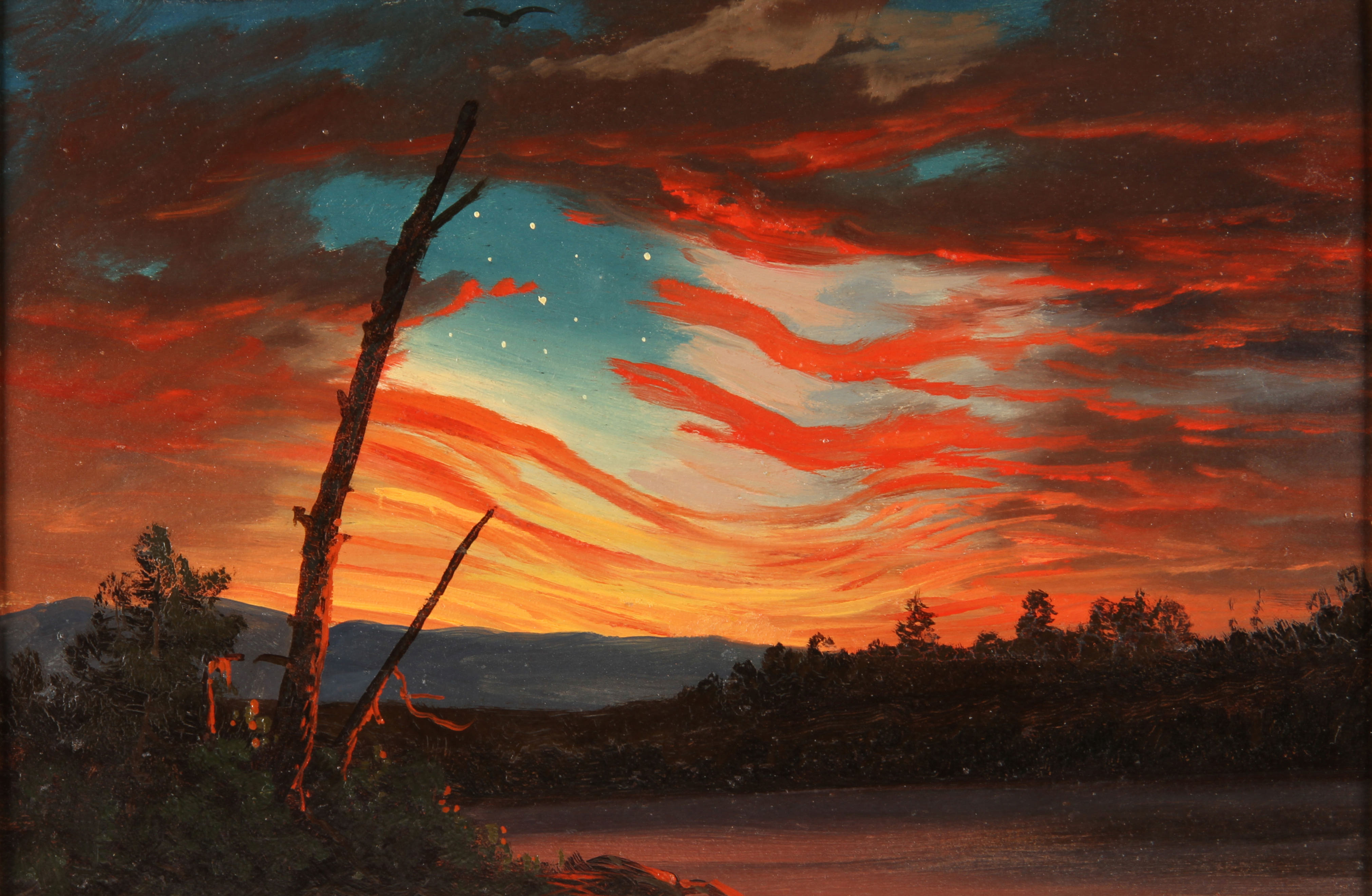|
I can’t decide whether to call it The heavens declare the glory of God or This Little Light of Mine. It’s a terrible photo, but it’s difficult to shoot a dark painting when it’s still wet and glossy.
|
Photographs exaggerate the chroma and contrast of the Northern Lights; they are more ephemeral in reality. They also move constantly. I wrote about the snaking patterns in Frederick Church’s Aurora Borealis here; there is something more real than reality in how he painted them.
It’s very difficult to photograph a dark painting when it’s wet; this is the best I can do for now. When I’ve finished the remaining paintings on my list, I’ll come back to it and consider whether it needs more light in the sky. For now, the answer is that I don’t know.
 |
|
Northern Lights, Tom Thomson, 1916-17
|
Tom Thompson painted the northern lights in this sketch from life, from his aerie in Algonquin Park in Ontario. “The best I can do does not do the place much justice in the way of beauty,” Thomson wrote to his patron, Dr. J.M. MacCallum. In fact this painting captures the energy and motion of Aurora Borealis almost perfectly.
Let me know if you’re interested in painting with me in Maine in 2014 or Rochester at any time. Click here for more information on my Maine workshops!


